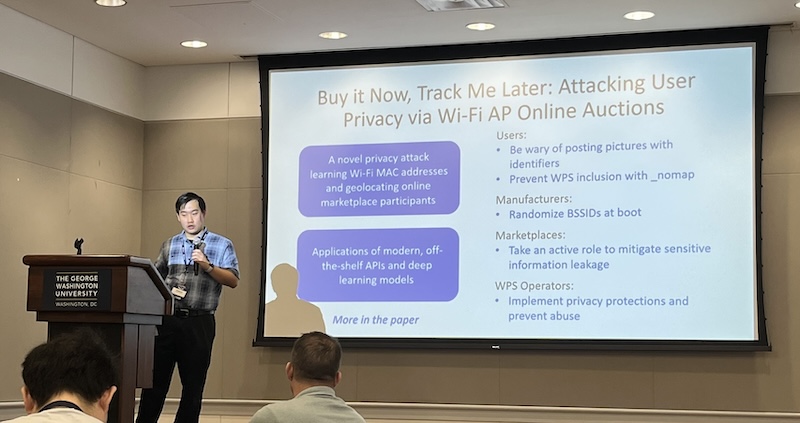News Story
ECE Inventors Honored at UMD Invention of the Year Award for Wireless Security Technology
Researchers from the Department of Electrical and Computer Engineering (ECE) were honored at the University of Maryland's 24th annual Invention of the Year Awards. The awards, organized by the university's Office of Technology Commercialization, honored the top inventions of 2010.
A team consisting of Christine Yurie Kim Eminent Professor of Information Technology K. J. Ray Liu, Wan-Yi Lin, and Nathan Goergen won Invention of the Year in the Information Science category for their invention, titled "Active Sensing for Dynamic Spectrum Access."
The inventors have presented a new framework that takes an active approach to spectral sensing for dynamic spectrum access (DSA) applications. In wireless shared spectrum scenarios, licensed digital television stations take a primary user role and are given explicit first-right-of-access to the television spectrum. When a primary user signal is not present, broadband users are allowed to use shared spectrum. Various detection and classification techniques using cyclostationary behavior, modulation characteristics, signal bandwidth, and spectral shape have been proposed to discern users of various roles in DSA theaters. However, these methods have limited detection performance due to the fact that the primary user is playing a "passively" role by not changing its signal to help spectrum sensing. These passive spectrum sensing schemes are also vulnerable to hostile environments such as primary user emulation attack in which a secondary user mimics some or all of the features of a primary user.
The "active sensing" scheme encourages primary users to actively help spectrum sensing by embedding their own unique, ID into the transmitted signal. The inventors propose to embed the information into the physical layer by manipulating parameters of the transmitted signal in ways that can be modeled as time-varying channel distortion. Hence such distortions can be fixed by non-blind equalization and will not degrade the performance of primary transmission. In this way, the primary user has full incentive to actively help spectrum sensing because its transmission performance is not degraded and the chance of being interfered by secondary users can be reduced. When applied to orthogonal frequency-division multiplexing (OFDM) signals in time-varying multipath channels, the inventors have demonstrated that their “channel-like” overlay fingerprint embedding scheme achieves 99.99 percent detection accuracy and 100 percent classification accuracy, with SNR as low as 5-6 dB.
Another team, consisting of ECE Professor Christopher Davis, Civil Engineering Research Professor Stuart Milner, and ECE alumnus Jamie Llorca, was a runner-up in the Information Sciences category for their invention, titled "Self-Optimization, Dynamic Positioning and Mobility Management in Wireless Networks." The inventors have developed novel models and methods for controlling and positioning directional wireless backbone (DWB) platforms in order to guarantee their coverage of mobile and user devices, while ensuring that the backhaul bandwidth and quality of service are maximized.









